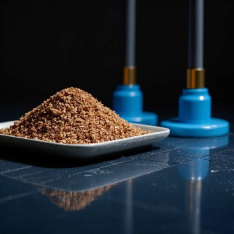In recent years, energy efficiency has become more important than ever in the building sector. Due to heightened environmental concerns and the soaring prices of energy, homeowners and constructors are in search of solutions that are cost-effective in terms of energy consumption. One such solution is vermiculite which is a permanent type of insulation that saves the environment as well. This article highlights the mechanism whereby vermiculite insulation can help reduce energy costs, its features, methods through which it can be installed in buildings and its contribution to green building solutions.
Vermiculite is a mineral that is comprised of vacuumed bubbles that expand when heated. Because of its expansion, it can hold air and thus acts as a great insulator. Because of this, vermiculite insulation gets to lessen energy costs by stabilizing the indoor temperature with minimal reliance on heating and conditioning systems. This not only helps reduce energy spending but also helps reduce the level of pollution to the atmosphere. Use of vermiculite insulation allows any residential owner to do their part while remaining emphasized on cutting higher energy costs on their house.
Vermiculite insulation has its perks and one of the big ones is fire resistance. Well, unlike other insulation materials, vermiculite does not catch fire making it quite safe to be used everywhere be it residential homes or commercial buildings. This property becomes especially vital in places that are prone to wildfires or in buildings that require strictly enforced fire regulations. Moreover, vermiculite insulation has mold and insect resistance which saves individuals and families from unhygienic living conditions. Such strength and iresilience verify that vermiculite becomes a lifetime asset for energy saving.
The installation of vermiculite insulation is quite simple and easy which makes it suitable for professionals as well as for ordinary persons seeking to do it themselves. It is possible to add vermiculite into attics, lagging of cellulose-filled walls or uses it in the coveted cavities in the insulated dry walls of tightly built structures contributing positively to their thermal resistance. In cooperation of them unwieldy other insulation materials, it can also work. It is equally important to ensure efficiency when using vermiculite insulation therefore it would be necessary to contact specialists at that point.
Sustainability factors into the design and build process in various ways, and with the changing trends in the construction industry, the inclusion of materials such as vermiculite insulation is expected to grow, especially for builders that are environmentally conscious. The fact that it is a natural mineral means it has little ecological effects and fits very well into green construction, which helps in obtaining LEED ratings and other similar objectives. In addition, the general trend of the construction market is towards greater energy use efficiency, and vermiculite insulation has great potential in delivering these market expectations.
To wrap up, considering the many benefits that this insulation offers, it is on all accounts a long term fit for most homes and indeed for most builders as well, maximizing energy efficacy with vermiculite. The characteristic features like thermal resistance and fire safety, the very premise of insulation make vermiculite an unmatched option in the insulation market. Importantly, vermiculite insulation has a fairly absolute edge on construction practices of future buildings considering that energy prices have and will only get higher, coupled with growing global consciousness. It can be expected that building designs that are energy efficient will be the trend and vermiculite will be such an important style element that will define such buildings in addition to satisfying contemporary construction requirements.

